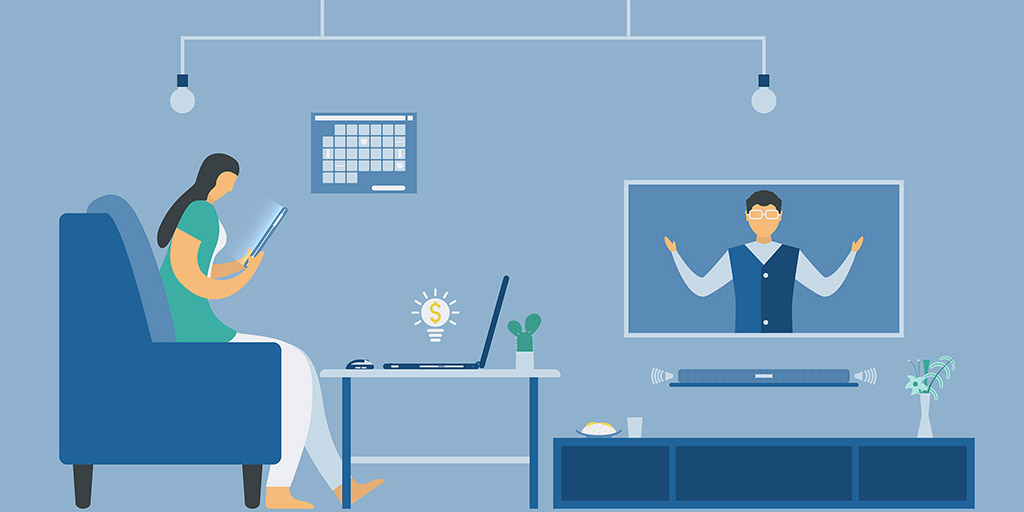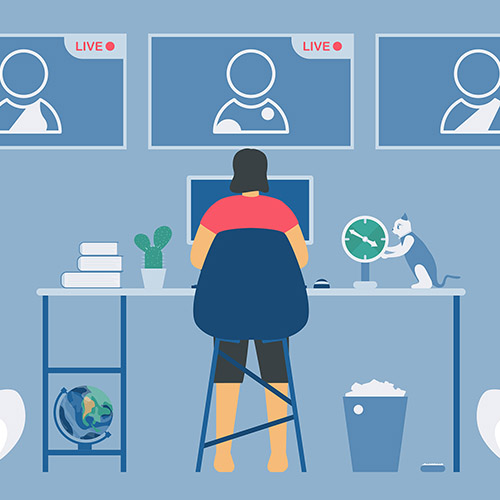In Part 1 of this article, I discuss lessons learned from internal experiments that I ran around remote workshops. I approached these experiments as I would any other, starting with what I wanted to learn and then structuring the parameters and activities to best test my assumptions. My goals with these experiments were to test the technology, collaborative tools, participant engagement, activities, timing, and outcomes compared to in-person workshops.
I designed two workshops, the first with 6-8 participants and a single facilitator. The workshop included activities such as individual ideation, affinitization, dot voting, remote sketching, and group discussion. The second workshop included 30 participants with multiple facilitators. This workshop included individual, large, and small group activities using breakout rooms. I used Zoom as the video conference platform and Mural as the collaboration tool for these sessions.
I found these experiments to be incredibly valuable in learning how I needed to adjust my planning and facilitation and increasing my own comfort level with the tools and communication in this format. Whichever tools you decide to use, it is important to become very familiar with the features and limitations before inviting others into these environments.
Unexpected Challenges
In addition to implementing the learnings from these formal experiments, I approach each workshop as its own opportunity to test, learn, and iterate. I am upfront with my workshop participants about this approach—that this is new territory and we are all learning together. This candor immediately helps in relieving some of the pressure and the anxiety of all parties. While I have seen significant improvements in the engagement and outcomes of the remote workshops we are offering, there are still some challenges we are working through.
I find myself needing to be more proactive in setting expectations and repeating instructions as compared to in-person workshops. I have also found that we cannot underestimate the learning curve of online collaboration tools. I have started writing out the objectives, agenda, and step-by-step instructions in the Mural board as part of my preparations. In addition, I am spending a few minutes at the beginning of the workshop to demonstrate the specific features we will be using and allowing participants time to play and become comfortable with the tools. These steps have definitely helped, but there are still hiccups. I am currently exploring what we can do prior to the workshop to better communicate and set everyone up for success—including sending out instructional videos or opening up a “sandbox” to provide an opportunity to play with the tools.
Another challenge has been around getting agreement or alignment when key decisions need to be made with smaller workshop groups. When we are all in the same room, I often find myself calling on participants I think are holding back or have hesitation based on their body language. This is much harder to gauge when we are remote. When we need to make a decision to move forward, I have started using a green-yellow-red status to start a conversation.
- Green - “I am in agreement and comfortable moving forward.”
- Yellow - “I have some hesitations that I would like to talk through.”
- Red - “I have serious concerns and am not comfortable moving forward right now.”
Each participant is asked to verbalize their status in turn. This ensures that everyone has a voice and opportunity to state their opinions and concerns. If more discussion is needed, this provides an entry point to facilitate a conversation.
Limitations of the Format
Through our experience, we have also found some limitations to the format. One such limitation is offering remote design sprints (Google Ventures model). As a design sprint (even sprint 2.0) is constructed to be a 5-day intensive process, it breaks the guideline of limiting workshops to 2-hour sessions. Anyone who has been through a design sprint knows they are intense and exhausting, particularly if you have a mix of participants with varying levels of experience and comfort. In place of formal design sprints, we are offering workshops that take pieces of a sprint as stand-alone workshops. (i.e., customer journey mapping, ideation, sketching, etc.)
Another limitation we have found is around co-design and physical prototyping activities. When we run these types of sessions we typically have a variety of materials we provide to express physical models and services (Lego, Playdoh, pipe cleaners, etc.). We cannot rely on or predict what materials participants might have available in their homes. To date, we have limited our activities to post-its and sketching.
Thinking Ahead
One thing has been on my mind is thinking ahead to this fall and next year. How do we offer workshops when things start to return to normal but aren’t quite there yet? How do we manage a workshop if half the participants are in the same room and the other half are online? What would a hybrid model look like? While I don’t have any answers to this right now, it is something I will be thinking about and looking towards higher education and more formal education models for inspiration.
Closing Thoughts
In closing, I have a few final pieces of advice to consider. It is always important to collect feedback on design activities, especially when you are trying something new. This can be as simple as adding columns for positives and deltas into your Mural board and asking participants to add a few post-it notes before they sign off. There were several things we learned in these retros that we were not able to observe or intuit in the workshops themselves.
- Positives - things that worked well and we should continue moving forward.
- Deltas - things that added friction and we need to change in future workshops.
I often use workshops as a forum for developing and training junior designers. When they are paired with a senior designer, they have the opportunity to observe and lead workshop activities in a safe environment. This is a bit of a challenge in remote workshops. I have found that a very experienced facilitator is necessary to successfully design, manage, and lead remote sessions. Imagine trying to teach someone to drive an 18-wheeler before they have learned to drive a car. The learning curve is steep and even experienced facilitators are facing challenges in remote collaboration.
My final piece of advice is to approach workshops as designed experiences. When we are not in the same room, it is harder to build trust and rapport. In a remote setting, it is even more important to think not just about what happens during the workshop but also the before and after. What communications do you send to participants ahead of time to set expectations, get them prepared, and generate excitement? What do the takeaways and follow-up look like? How are participants greeted at the beginning of the workshop? What do they see and hear as they enter and people are still gathering? Is there audio or another sensory experience you include during down times and moments of individual activity? Are there digital or physical artifacts you are sending to participants that they can use moving forward? This is an opportunity to flex our design muscles, show our creative thinking, create a memorable experience, and build relationships with our clients in an unprecedented time.
This is an opportunity to flex our design muscles, show our creative thinking, create a memorable experience, and build relationships with our clients in an unprecedented time.
As a design community, we need to swiftly adapt to a new way of working and change our approaches overnight. Remote workshops are not as scary or limiting as I once thought they were and I now have new tools and methods I can permanently add to my design toolbox.
I hope you have found value in this series. If you are interested in learning more about remote workshops, please check out the recording of Cantina’s Coffee Chat on the topic and our remote workshop offerings.
During this time of increased pressure to innovate rapidly and efficiently, let us know if you or your team need any assistance. We are happy to help! Please reach out at hello@cantina.co.



